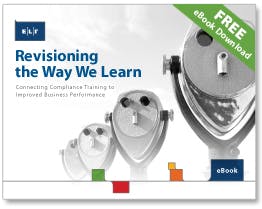In 2011, the American Society for Training & Development (ASTD) estimated that U.S. organizations spent $17 billion in 2010 on mandatory and compliance training.
In too many instances, that meant learners sped through training modules, zoomed through the next, all to verify completion.
This annual ritual wastes time, money, and credibility, which are all scarce business resources. And, judging from headlines in the world of business, finance, and sports, among others, it fails to prevent, detect and correct problems, the purpose of compliance training.
We need more than raw information
What’s the solution? Leaders need to figure out what’s truly important and make sure everyone understands their values and generally what’s acceptable and what’s not.
Does anyone think the debacle at Penn State would have happened if everyone knew that protecting children took precedence over protecting Penn State football and its chieftains? Would financial disasters in the mortgage and credit industries have arisen if individuals knew they were expected to speak up whenever problems arose and that they could do so safely?
In neither case do we get points like those across by check the box, mind numbing annual learning events covering remote hypotheticals, complex legal terms and intricate complaint systems. That’s all raw information.
If people want to get it they can. It’s only a mouse click away. The key is to make sure they know what’s important and real to their organizations.
Linking concepts to business results
Second, the marriage of developments in technology and advances in understanding how we learn gives us a chance we can’t ignore more effective workplace compliance learning. I wrote my new eBook, Revisioning the Way We Learn, to provide a road map for translating values and standards to actions and communicating them in a way that matters, is simple to understand and sticks throughout daily workplace behaviors (you can download it free here).
This involves linking concepts to business results, chunking information and repeating a few rather than multiple themes through the use of old and new learning technologies inside the classroom, at the desktop and on the job. The result — an ongoing learning experience to give leaders the understanding, skills and tools they need to communicate key messages as part of their routine responsibilities.
That’s the way to change culture and avoid the disasters that make news and haunt us.
Stephen Paskoff writes about how to build a civil workplace on his blog at www.eliinc.com.
